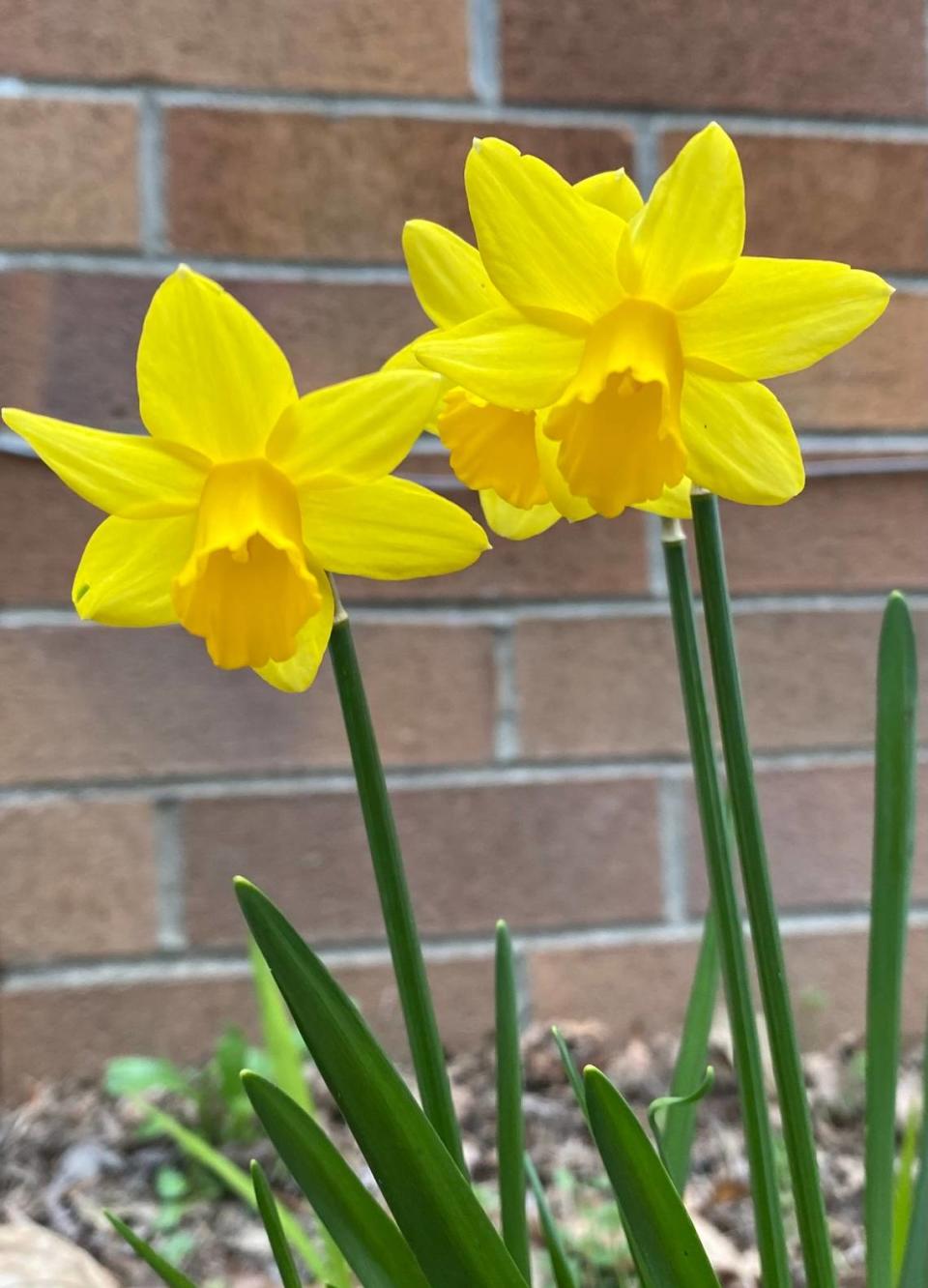Tips for keeping daffodils coming back year after year in Western Washington
April is here, so is it time to plant? That would be a yes, and also a no.
All cool-season veggies such as lettuce, radish, kale, peas and cabbage can be seeded into the soil this week as long as the soil is not too wet to work. If you don’t have raised beds or well-drained soil, just do the squeeze test. Grab a handful of soil and squeeze it in the palm of your hand. When you open your hand, if the soil stays in a wet, solid ball, then it is too wet for planting. Wait a few weeks and try again.
This week you also can plant trees, shrubs, perennials and berry plants. Visit the nurseries now as the best varieties and most unique plants sell quickly.
Things on the “Do Not Plant Yet” list include tomatoes, begonias, marigolds, impatiens and other tender bedding plants. Also wait to plant warm-season edibles such as cucumbers, peppers, corn, beans, squash and basil.
Q. I have daffodils blooming for the first time. I planted the bulbs in the fall. How do I care for them after they flower? — N.B., Bonney Lake
A. Daffodils will return year after year if you allow the green leaves to mature and yellow even after the flowers fade. (You can snip off the faded flower heads to tidy up but this is not necessary.) During the summer months, the bulbs must be allowed to go dormant so allow the soil near the daffodils to be dry all summer.
Do not braid or tie the long green leaves as this interferes with the energy they are sending down to the bulb for next year’s flowers. You can hide the fading leaves by planting daffodils behind drought-resistant perennials such as hosta or peonies or positioning the blooms behind large boulders. Some gardeners even dig up the bulbs after the leaves fade and store them in a dry spot. Then the empty garden space can be used for summer flowers that need water, and the daffodil bulbs can be replanted in the fall.
Q. How long do I need to leave daffodil foliage to ripen before I can cut back the leaves? I have heard every bit of advice from 3 weeks to 8 weeks. — P., Email
A. Gardening is an art not a science so instead of a number of days look at the color of the leaves. As long as there is some green in those leaves, they are making food for the flower. Once the foliage is done maturing, you should be able to remove the leaves with a slight tug — no clipping needed. Most years this takes until June.
Q. Will deer and moles eat daffodils? — C.C., Buckley
A. Deer will sample anything but soon learn to avoid the toxic sap in daffodils. Moles eat earthworms and soil larvae, but mice and voles use mole runways to devour many types of bulbs — but not daffodils, again because that toxic sap keeps the critters away.
Marianne Binetti has a degree in horticulture from Washington State University and is the author of several books. Reach her at binettigarden.com.




